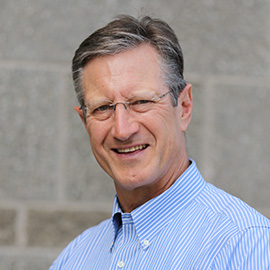Learning Through the Power of Discovery

I watched a coach tell a young player, “Why don’t you do what I tell you to do?!” The stress on the player’s face was obvious; he was overwhelmed by insecurity. He was in an environment that wasn’t conducive to learning. Later, I watched the coach’s team play as poorly as a team could have played.
Let’s examine our communication from two perspectives: Is it transactional or transformational? Transactional means “I do this, you do that,” while transformational is about understanding why we’re doing this to achieve that.
As leaders, parents, or mentors, we often try to help by telling others what to do or providing answers. It saves time, shields others from difficulty, and shows our capability and wisdom. We are communicating in a transactional way. However, when we give answers too quickly, we unintentionally remove something important—the opportunity for others to learn through their own transformational discovery.
Leaders ask us, “What should I do with this employee who will not listen to my directives?” Instead of providing a direct answer, we try to respond with a simple question: “What do you think might be going on?” The pause that follows is where growth begins. When someone steps back to think, reflect, and connect the dots for themselves, they start to realize they may have the answer. The insights that emerge are now theirs, not ours.
When we are told what to do, we might follow along. When we figure it out ourselves, we are truly committed. The energy behind caring about the result is completely different.
The Science of Learning by Discovery
Our brains are wired for curiosity. Dopamine, the chemical often linked with pleasure, peaks when we’re anticipating learning something new. The aha moment gives us a rush not because someone gave us the answer, but because we discovered it.
When we are told what to think or do, the desired outcome often doesn’t happen. Instead, we might feel intimidated, insecure, and inferior, which raises cortisol levels and puts us on the defensive. We become less open to learning.
When we are invited to explore, question, and test possibilities, the wise brain activates, the learning sticks.
Mindfulness improves this process. When we pause and observe what’s happening inside and around us, the “wise brain” (our prefrontal cortex) takes over. We move beyond the primal, reactive brain that demands immediate certainty about being right out of fear of being wrong, and instead embrace curiosity and growth. The wise brain works toward a better tomorrow.
Leaders as Guides, Not Answer Machines
Many leaders feel pressured to provide answers. They associate leadership with control or expertise. However, the most successful leaders, those who achieve lasting success, learn to lead through discovery rather than dictating.
They ask questions that awaken curiosity:
- What do you think could be the main challenge here?
- If this were working perfectly, what would it look like?
- What’s another way we could achieve the desired outcome?
Questions shift ownership to the learner. They encourage reflection, creativity, and collaboration. They also show care—because asking instead of telling shows the person is valued.
In The Shift from Me to Team, I explain that true leadership starts when we stop trying to prove ourselves and instead create space for others to develop. Curiosity is a powerful force and a key part of the transition from me to team.
Reflection: Where Learning Takes Root
Discovery sparks learning, but reflection solidifies it. Without reflection, lessons are forgotten. In his book Heroic Leadership Chris Lowney discusses how the Jesuit Order is likely to endure forever because Jesuits emphasize the discipline of reflection:
- at the end of the morning
- at the end of the afternoon
- at the end of the day
- What went well?
- What could go better tomorrow?
Reflection turns action into learning and errors into wisdom. It transforms the act of doing into growth.
A Simple Practice: The 3-Minute Curiosity Pause
Before giving advice, spend three minutes asking one question starting with “What might . . .” or “How might we . . .” and then listen carefully.
We are surprised by what happens when curiosity replaces instruction. You’ll also find that others grow more confident and capable because they learn to trust their own discovery process.
Closing Thought
We don’t learn deeply by being told. We understand by being encouraged to think and through curiosity, reflection, and discovery.
Authentic learning occurs not through telling, but by asking questions that enable learners to solve challenges independently.
Try it, and we would love your feedback on how it went. And we are glad to help, just ask.






